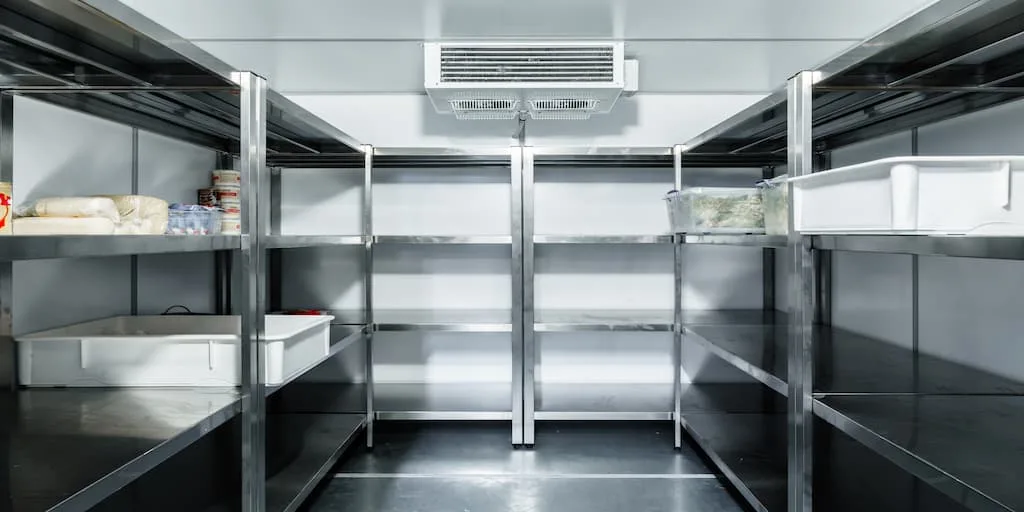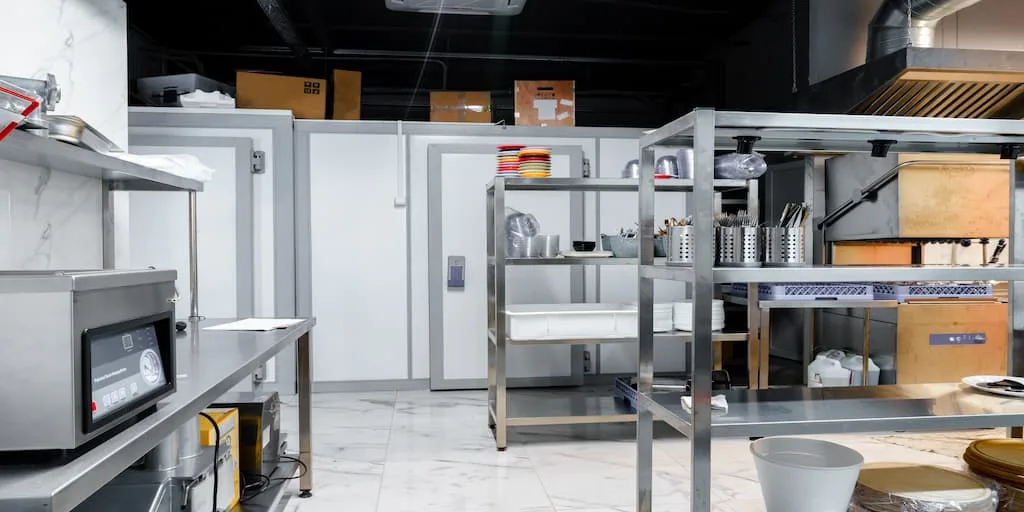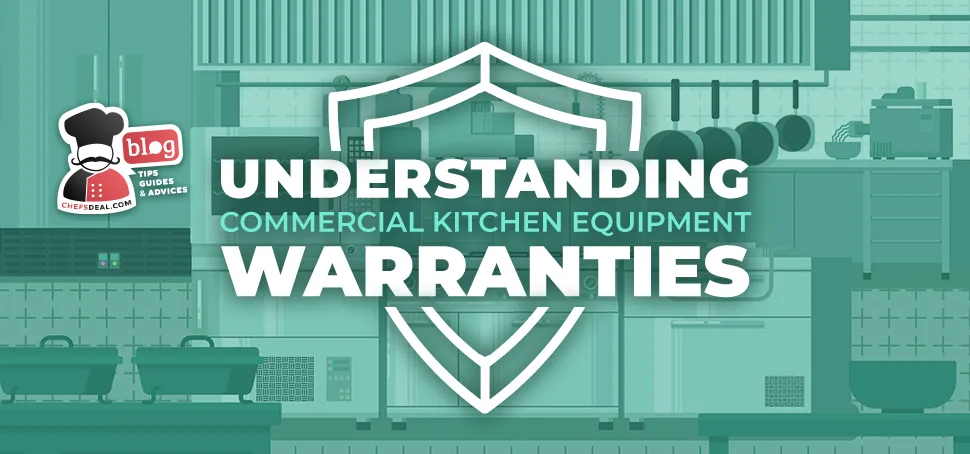Investing in walk-in refrigeration is a significant decision for any food service business, requiring careful consideration of numerous factors to ensure the choice aligns with operational needs and financial constraints. The cost of walk-in refrigeration units varies widely, with expenses influenced by size, customization, location, and additional features, potentially ranging from $6,000 to over $40,000.
Customization, such as alarm systems, specialized doors, and energy-efficient features, can drive costs higher, while options like walk-ins without floors or combo units can offer savings. Size and capacity are crucial, with standard measurements available, yet customization options allow for tailoring to specific spatial and storage requirements. The temperature range is another vital consideration, with coolers and freezers designed to maintain specific temperature brackets crucial for food safety.
Location plays a significant role, with indoor and outdoor units each presenting unique benefits and challenges. Energy efficiency is paramount, given the substantial energy consumption of these units, with strategies such as insulation quality, door seals, and energy-efficient lighting significantly impacting operational costs. Durability, panel material, and insulation type are essential for the longevity and effectiveness of the unit, while refrigerant type and condenser options affect environmental impact and operational efficiency.
In addition to these primary considerations, ease of cleaning, door type, interior lighting, and external finish contribute to the functionality and maintenance of the unit. Flooring material, customization options, and expandability are critical for future-proofing and ensuring the unit meets current and anticipated needs. Finally, ease of assembly, warranty, and service support, as well as the unit’s environmental impact, round out the key factors to consider when selecting a walk-in refrigerator. These 26 factors are listed below:
- Cost
- Size and Capacity
- Temperature Range
- Location Requirements
- Energy Efficiency
- Durability
- Panel Material
- Insulation Type
- Refrigerant Type
- Condensor Type
- Compressor Type and Efficiency
- Defrost Mechanism
- Ventilation System
- Monitoring Systems
- Safety and Health Features and Their Compliance
- Shelving and Storage Options
- Ease of Cleaning
- Door Type and Door Seal Quality
- Interior Lighting
- External Finish
- Flooring Material
- Customization Options
- Expandability
- Ease of Assembly
- Warranty and Service
- Environmental Impact
Optimizing kitchen space for new walk-in refrigerators is crucial, highlighting the importance of thorough space assessment and seamless integration into existing workflows. Financial planning for this investment, focusing on equipment financing options, highlights the benefits of lower initial costs, flexible repayment plans, and tax advantages. By considering these factors and supplementary content, businesses can make informed decisions that enhance operational efficiency, meet regulatory requirements, and support long-term financial sustainability.
1. Cost
The price range of walk-in refrigeration units fluctuates between as low as $6,000 and as high as $40,000. On average, you can expect to spend $15,000 to $20,000 for a reliable walk-in unit. The cost of a walk-in depends on factors such as size, customization costs, finish, shipping costs, flooring, and product type.
You can expect to spend higher prices for the following:
- Customization requests such as integrated alarm systems, specialized doors, monitoring systems, extra shelving, and energy-efficient features might derive the cost even above $40,000.
- Outdoor walk-in coolers cost 10-15% more than indoor units.
- Protective finish upgrades can cost an extra 10-40% depending on the size of the unit that requires coating and the material of the protective finish.
If you wish to reduce your spending, you can consider the following
- Walk-ins without floors will cost 10-20% less on average. If your existing flooring is sufficient for a walk-in unit, consider purchasing a unit without a floor.
- Walk-in cooler and freezer combos cost 10-15% less than buying two separate units. Consider buying a combined unit if you can manage with decreased capacity. This method can save you as much as $10,000.
- Walk-in cooler box-only models do not include a refrigeration function and require a remote cooling system to refrigerate. If you already have a remote compressor, you can purchase only the box and lower your spending significantly. However, depending on the state and type of your compressor, this option might not be worth the risk.
Smartly navigating the costs of walk-in refrigeration can significantly impact your bottom line. By weighing customization against standard options and exploring combined units, businesses can find a balance between functionality and budget.
2. Size and Capacity
The size and capacity of a walk-in unit can be customized according to your spatial circumstances and storage needs. After measuring the allocated space in your kitchen and considering the capacity you need, you can make an informed decision. The most standard measurements tend to be as follows:
- 6’x8’ (1.82 x 2.44 m)
- 6’x10’ (1.82 x 3.05 m)
- 6’x6’ (1.82 x 1.82 m)
- 8’x8’ (2.44 x 2.44 m)
- 10’x8’ (3.05 x 2.44 m)
- 10’x10’ (3.05 x 3.05 m)
- 10’x12’ (3.05 x 3.65 m)
- 12’x12’ (3.65 x 3.65 m)
While these size options are popular, you don’t need to restrain yourself from these measurements. You can customize the height, length, width, and depth of your unit with the help of your manufacturer. However, keep in mind that standard units will be faster to obtain since they are more likely to exist readily in the warehouse for delivery.
Once you understand the approximate size your space can accommodate, you should consider your capacity requirements. In the context of a cooler or a freezer, capacity refers to the physical and thermal load of the unit. 1 cubic foot (0.283 cubic meters) of space holds 28 lbs (12.7 kg) of food. Based on this number, you can gauge how much space you need in your unit.
Additionally, you need to consider the thermal load of the unit. (Thermal load refers to the necessary amount of BTUH (British Thermal Units per Hour), and a unit’s BTUH rating indicates how much heat it can remove from space in an hour, which is crucial to maintaining the desired temperature.) Selecting a unit with the correct BTUH capacity ensures it can effectively and efficiently manage the thermal load of the space, balancing the heat entering and leaving the area to maintain consistent cooling. You can talk to your provider or contact an engineer to understand your BTUH needs.

3. Temperature Range
The temperature range for a walk-in cooler is between 35°F and 45°F (1.7°C to 7.2°C), while the temperature for a walk-in freezer is typically set between -10°F and 0°F (-23°C to -18°C). The cooler temperature range is ideal for preserving freshness and preventing the spoilage of perishable items such as fruits, vegetables, dairy products, meat, and even flowers. Ensure you only store items that will be used soon in a cooler and employ a first-in-first-out method to avoid waste.
Freezer temperature ranges, on the other hand, are crucial for safely storing frozen foods and ensuring they remain at a consistent quality. You might require special temperature adjustments based on the products you intend to store. For instance, certain wines, aged cheese, pharmaceutical products, and similarly unique items will have their own temperature brackets and require fine-tuning. Don’t forget to consider your special requirements before you make your purchase.
4. Location Requirements
Location requirements for walk-in coolers and freezers mainly involve choosing between outdoor and outdoor walk-ins, each with its own pros and cons. Indoor units offer easy access and cleaning but can increase kitchen temperatures. Outdoor units save space and allow better ventilation but require additional security and can be less convenient to access. Compliance with local guidelines and codes is also essential when locating the unit.
To maximize efficiency, you should consider the proper airflow spacing, external placement of condensers and evaporators, and avoiding proximity to heat sources. Keep in mind that you are obligated to place unit 6″ (15.24 cm) away from the ceiling and unit 2″ (5.08 cm) on the walls. These measurements might vary from state to state, along with other requirements due to different climates, etc.

5. Energy Efficiency
Walk-in coolers and walk-in freezers are sizable energy consumers due to their size, function, and non-stop working schedule. Walk-in freezers spend more energy than coolers since the temperature they need to maintain is lower than that of their cooler counterparts. ENERGY STAR certification is not yet available for walk-in units. You can ensure that your unit is as energy-efficient as possible by paying attention to the following:
- Insulation: High-quality insulation minimizes heat transfer and helps the unit maintain the desired temperatures.
- Door Seals: Make sure that the door seals are in good condition to prevent air leaks.
- Energy-Efficient Lighting: Use LED or other energy-efficient lighting to reduce electricity bills. You can also buy motion sensor lights to prevent unintentional waste.
- Regular Maintenance: Regularly check and maintain refrigeration systems to get ahead of the problems.
- Proper Installation: Ensure the unit is installed correctly with adequate ventilation. Consult your provider and follow the local guidelines when installing the unit.
- Energy Management Systems: Install systems to monitor and control energy usage. This way, you can detect and fix anomalies before they raise your bills.
- Reflective Coatings: Reflective coatings on external surfaces reduce heat absorption.
By taking these measures, you can reduce operational costs and ensure that the unit uses electricity effectively.
6. Durability
The unit’s durability defines how well it can withstand the intense work environment of a commercial kitchen and how long it can be trusted to work without a hitch. Make sure to opt for high-quality material and solid construction with secure seams. Flooring should be sturdy enough to withhold the unit’s weight along with the stored products, and insulation thickness should be as thick as possible or at least within the range your local guidelines enforce. Also, a long-term warranty indicates the manufacturer is confident in their product.
7. Panel Material
Panels are the walls of walk-ins, and they are responsible for the equipment’s insulation. They are made up of two metal sheets, also known as skins, and an insulator layer between them. The metal skin tends to be 3.5″ to 5″ (8.89 to 12.7 cm ) thick, depending on the insulation layer, and you should ensure that it is resistant to corrosion and damage:
- Galvanized Steel: While this material is a solid, dent-resistant option, its price has made it less popular.
- Aluminum: While aluminum is corrosion-resistant and significantly cheaper than steel options, it is sadly not as sturdy and susceptible to dents. If you invest in aluminum panels, make sure to increase the thickness as much as possible.
- Stainless Steel: Stainless steel is one of the most popular materials thanks to its resistance to corrosion and durability. While it might be pricier, you can rely on the material to increase the unit’s longevity and efficiency.
8. Insulation Type
The insulation layer is important since the walk-in heavily relies on its built-in insulation for energy efficiency and regular functioning. The insulation layer is usually 4 inches (10.16 cm) thick, and there are several panel materials you can choose from when buying a walk-in cooler or freezer. For maximum efficiency, you should primarily consider the material’s R-value (a measure of thermal resistance indicating how well a material can trap or resist heat).
- Foam-in Polyurethane Panels: Known for excellent insulation, these plastic-type layers are widely used due to their balance of insulation value, strength, and cost. Thanks to its high R-value, this material allows for thinner walls. Also, it is resistant to fire and won’t lose its effectiveness fast unless explicitly exposed to external elements.
- Polystyrene Panels: Often chosen for their cost-effectiveness, these panels provide good insulation but are less durable than polyurethane. Their R-value is slightly lower, which needs to be compensated with thicker walls. This might not be preferable if you have limited space. However, the material is still good, and its resistance to water and airflow makes it a good option.
9. Refrigerant Type
Refrigerant refers to the cooling agent chemical needed to achieve cooling in the unit. Over the years of technological development, many refrigerants have been phased out for their negative impacts on the ozone layer. R-448A and R449A are newer refrigerants developed to replace the harmful ones. These types are more eco-friendly. R-290 is a similarly new, popular, and eco-friendly option. It is cheaper than other options but is flammable and should be handled by professionals.
10. Condensor Type
There are 3 main condenser types: self-contained, remote, and multiplex. Self-contained units are integrated and easy to use but can be noisy and require good ventilation. Remote condensers are located outside the unit, offering quieter operation and better heat management but may be more complex to install. Multiplex condensers serve multiple units, are energy-efficient, and provide precise temperature control, but their installation can be complex and costly. Each type has unique advantages and challenges, which businesses must consider before purchasing. You can read our article on the subject to gain more detailed information.
11. Compressor Type and Efficiency
The compressor is responsible for maintaining the desired temperature within the unit. Your compressor should work well to ensure the unit works and uses the electricity efficiently. The type of compressor you should go for usually depends on the unit size since the compressor should be equipped to shoulder the machine’s load. Rotary compressors are found in small units while reciprocating compressors are utilized in small to medium walk-in coolers and freezers. Screw compressors, on the other hand, are used for larger units.
12. Defrost Mechanism
Walk-in coolers and freezers are prone to frosting, and you need a defrosting mechanism to prevent ice buildup. Some models are equipped with automatic defrost mechanisms to save you the trouble. The defrosting cycle is initiated periodically to maintain a smooth operation.
If your unit does not have an automatic defrosting mechanism, you will have to do it manually. Manual defrosting includes emptying the unit and turning it off to prevent the ice from melting. This method requires a lot of downtime for the unit, an additional storage space for the ingredients in the meantime, and places an extra task on your to-do list. Investing in a model with an automated defrosting mechanism will save you a lot of trouble and prevent downtime.
13. Ventilation System
A sound ventilation system is necessary to maintain a uniform temperature inside the walk-in unit. The refrigeration process generates heat, which needs to be removed effectively and quickly to avoid overheating the unit. You should leave room around the walk-in to allow air circulation and ensure it is not placed next to heat-generating machinery such as ovens.
14. Monitoring Systems
Monitoring systems for walk-in coolers and freezers help you avoid problems by notifying you about open doors, temperature fluctuations, power failures, and more. You can invest in digital or analog temperature readouts or remote monitoring systems. Digital models will measure and update the temperature periodically and notify you if it goes out of range. Remote monitoring systems are quite advantageous since you can be made aware of a problem regardless of the hour. If there is a power shortage after hours, you can take measures to protect your products instead of coming to a surprise problem in the morning.
15. Safety and Health Features and Their Compliance
The unit’s and staff’s safety are two aspects of walk-in safety and health features. You can install locks and alarms to protect the equipment from theft. For staff safety and health, you should ensure the safety releases are intact in case of entrapments, provide your staff with the necessary clothing to enter the unit and organize your products carefully to avoid spillage and cross-contamination. For instance, placing products such as chicken on higher shelves can contaminate the products on the lower shelves if there is leakage.
16. Shelving and Storage Options
Most walk-in cooler or freezer shelves are customizable. You should consider the type of products you will store to get the best shelves possible for your storage needs. For instance, if you store small/short items, you can increase the number of shelves and decrease the distance between them. Similarly, you can go for fewer shelves with big gaps between them for taller items. You can adjust the size and type of the shelves. Wire shelves and racks are perfect for maintaining airflow, while plastic shelves are easier to clean.
17. Ease of Cleaning
Walk-in coolers and freezers are large units; cleaning is essential to avoid health hazards. Ease of cleaning is a top concern when investing in a new model. Features such as coved corners, smooth surfaces, and removable solid shelving can minimize dirt buildup. Also, installing floor drains can help you eliminate the cleaning water without risking contamination. The material the unit is made from also plays a role in the ease of cleaning. Stainless steel units are resistant to corrosion and fairly easy to sanitize.
18. Door Type and Door Seal Quality
Walk-in coolers and freezers come with either hinged or sliding doors and some feature self-closing mechanisms for added convenience and efficiency. The quality of door seals is crucial in preventing air leaks, which helps maintain consistent internal temperatures and reduces energy usage. Ensure the model you plan to invest in has high-quality door seals to prevent air leaks.

19. Interior Lighting
Effective lighting, such as LED, is important for visibility inside the unit. LED lights are preferred for their long lifespan and energy efficiency, significantly reducing operational costs. You can also invest in motion sensor lights to save on energy.
20. External Finish
The external finish should resist corrosion and damage. Materials like stainless steel or aluminum are often used for their durability and resistance to harsh environments. You can invest in embossed coated steel for an aesthetic appearance and additional scratch resistance or get a galvalume finish, a mixture of aluminum, zinc, and silicone, for extra corrosion resistance and durability. Acrylume is also a good option to avoid fingerprints and smudges on your unit.
21. Flooring Material
When considering flooring for walk-in coolers and freezers, it’s crucial to evaluate factors such as insulation efficiency, hygiene, safety from slips, and compliance with health standards. While some walk-ins might not need specialized flooring, the location and intended use of the unit should guide this decision. Various flooring materials, including aluminum panels and reinforced options, are available, catering to different weight capacities and utility needs. Investing in floored models and ensuring insulation can prevent heat transfer and make the unit more efficient. Also, non-slip materials can decrease the likelihood of accidents.
22. Customization Options
Many manufacturers offer customization options, allowing buyers to tailor dimensions and features to their specific needs. This flexibility ensures the unit fits perfectly in the designated space and meets operational requirements. In addition to the size, you can customize the shelves, racks, floors, doors, and more. However, keep in mind that opting for a non-standard unit means longer wait time for production and delivery. If you are in a hurry, you might want a ready model with standard dimensions and features.
23. Expandability
If you aim for substantial business growth, you should invest in expandable, modular units. Modular designs in walk-in units offer the advantage of growing alongside your business. As storage needs grow, additional panels can be added to increase the size of the unit. This is a cost-effective solution for long-term plans and needs. However, if you have no intention of growing your production, you don’t need to invest in a modular design.
24. Ease of Assembly
Installation is the trickiest part of any purchase, and walk-ins are no exception. While most manufacturers offer installation services, if you are buying second-hand or hoping to deal with assembly on your own, you should find out how hard it is to assemble the model in question. Prefabricated standard units are fairly easy to assemble, and you should have no problems getting the unit up and running. If the unit is too big or complicated to assemble in-house, ensure your provider has assembly services.
25. Warranty and Service
Warranty and customer support service should be considered with any commercial purchase. The warranty’s sheer length signifies the manufacturer’s confidence in their products, and having a long warranty ensures that such a big investment has a safety net in case of a problem. Similarly, a good service network is highly important for maintenance calls. Most problems can be handled with the help of an expert technician. Ensure the brand you buy from has a wide support network and can offer maintenance services in your area when needed.
26. Environmental Impact
The environmental impact of walk-in coolers and freezers encompasses their entire lifecycle, from manufacturing to disposal. Business owners can play a significant role in reducing the carbon footprint of walk-in coolers and freezers. You should pay attention to the following to minimize your carbon footprint:
- Energy Efficiency: Opt for units with high energy efficiency ratings.
- Eco-Friendly Refrigerants: Choose refrigerants with low global warming potential.
- Regular Maintenance: Keep the unit well-maintained to ensure optimal efficiency.
- Proper Disposal: Responsibly dispose of old units, particularly refrigerants.
- Sustainable Practices: Consider renewable energy sources for power and support manufacturers with sustainable production practices.
By making informed choices and prioritizing sustainability, you can significantly reduce the environmental impact of their walk-in units.
Optimizing Your Space for a New Walk-In Refrigerator
When installing a new walk-in refrigerator, it’s crucial to thoroughly assess the available kitchen space and existing workflow. Speed is essential to the survival and success of the restaurant. This ensures the new fridge fits comfortably and doesn’t disrupt kitchen operations. Proper space assessment includes measuring the area, considering door swings, and ensuring adequate room for staff movement. Integrating the refrigerator smoothly into the kitchen environment also involves considering how it will affect existing work patterns, access to other equipment, and overall kitchen efficiency. Thoughtful planning in this stage can significantly improve the functionality and workflow in a kitchen.
Financial Planning for Your Walk-in Refrigeration Investment
Equipment financing for walk-in refrigeration is a great way to solve the money problem at the early stages of your business. Manufacturers or finance companies provide the financing, which carries many benefits. This process is typically quicker than traditional bank loans. Benefits include lower initial costs, low-interest rates, tax deductions, and customizable repayment plans spanning 12-60 months. This financing method enhances business operations by enabling access to better equipment and improving efficiency and quality of service.
Conclusion
Selecting the right walk-in refrigerator for your food service operation involves a comprehensive evaluation of various critical factors, including cost, size and capacity, temperature range, location, energy efficiency, durability, and more. By carefully considering these elements, businesses can invest in a unit that meets their current storage and aligns with long-term operational goals and sustainability practices. Optimizing kitchen space and understanding financial planning options for the investment can further enhance the value and functionality of the walk-in refrigerator. Ultimately, the right walk-in refrigeration, chosen with a careful balance of these considerations, will contribute significantly to food service operations’ efficiency, safety, and profitability.





